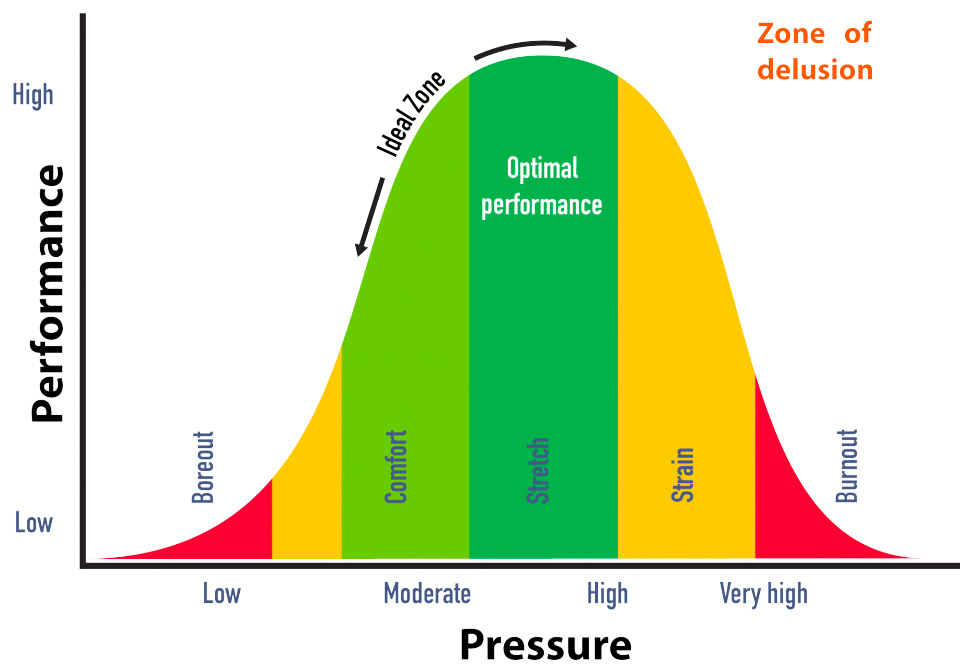We have updated our Privacy Policy, click here for more information.
Thank you

Published: July 28, 2023
The Williams pressure curve builds on some work published in 1908 by psychologists Robert Yerkes and John Dodson who studied the effect of pressure on performance; concluding that there is a normally distributed relationship between pressure and outcome where too little and too much produce suboptimal performance.

The Williams curve is pretty self-explanatory but as with all representations of the complex it can be overly simplistic. There are two missing aspects that stand out for me, firstly we are all different with different levels of tolerance so what is optimal pressure for one person could be insufficient or two much for others. The second is time, most people can endure very high pressure but for how long? And, of course, we are not constants, so even if we built a personalised version of this, it would not be stable as our own levels of resilience vary with time, circumstances etc.
We all have stress-tolerance vectors where our behaviour shifts based on the change in the levels of stress. There are two primary factors in this: the degree of change in stress-levels and the time that we are able to perform under that new level of pressure before performance drops off.
Every time we go through periods of high intensity we build resilience and our ability to endure more the next time generally increases and the time we can endure under high stress increases. It’s a bit like holding your breath underwater, the more you practise the longer you can stay under. The underwater analogy is probably a good one because as you approach the boundaries of your tolerance it can have sudden and catastrophic consequences. Antonio Horta Osorio, CEO of Lloyds Bank found his sleep pattern totally collapsed, after five sleepless nights he was forced to step away from the business and seek help.
The high-stress part gets a lot of coverage and there are support mechanisms in place to help people but the low-stress part gets virtually no attention yet can in its own way be equally destructive. The signs of Boreout include: demotivation, disengagement, cynicism, lethargy, insomnia, anxiety all of which can lead to depression.
Boreout is also socially stigmatised, society likes to celebrate busyness while higher degrees of stress are often associated with status. This means it can be hard for anyone suffering boreout to talk to their friends about it; with no outlet for the way they are feeling, people suffering boreout can enter an awful esteem destroying negative spiral.
One of the few researchers to investigate Boreout is Ruth Maria Stock, she defines it as “… a negative psychological state of low work-related arousal, manifested in three main forms: job boredom, a crisis of meaning at work, and crisis of growth at work.”
She goes on to investigate how this state of mind in employees negatively impacts customer relations.
It might be easy to say to someone suffering from boreout to just find another job or ask for more work but by the time people are able to identify the symptoms their self esteem is already suffering. It is in all of our interests to identify people suffering boredom at work, help them but also use that as an indicator for efficiency or automation possibilities in the way we work.
 |
David Collins |